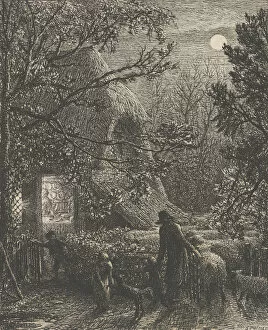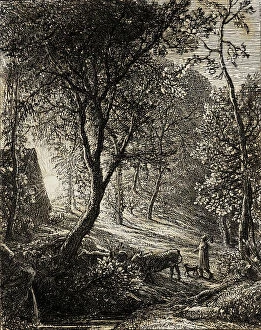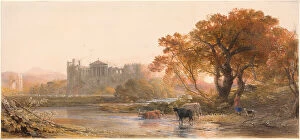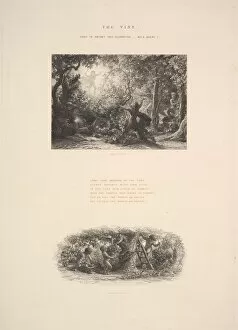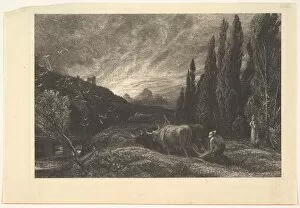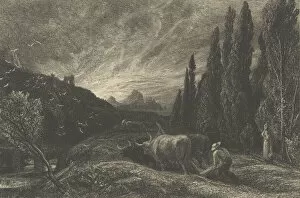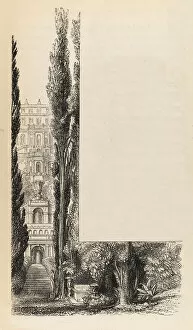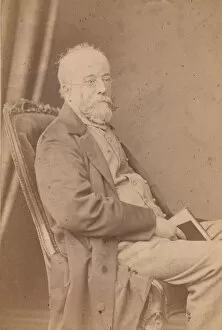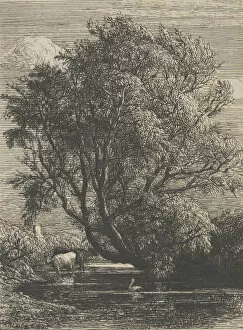Palmer Samuel Collection
"Palmer Samuel: Capturing the Beauty of Nature and Daily Life" Step into the enchanting world of Palmer Samuel
All Professionally Made to Order for Quick Shipping
"Palmer Samuel: Capturing the Beauty of Nature and Daily Life" Step into the enchanting world of Palmer Samuel, a renowned British artist whose works continue to captivate audiences even today. Born in 1805, Palmer's artistic journey was marked by his deep connection with nature and his ability to portray it with unparalleled beauty. One of his notable pieces is "Christmas, or Folding the Last Sheep, " painted in 1850. This masterpiece depicts a heartwarming scene where shepherds gather together during the festive season, folding their sheep as they prepare for Christmas celebrations. The warm colors and meticulous attention to detail transport viewers into this joyous moment. In "The Herdsmans Cottage, or Sunset" from 1880, Palmer showcases his mastery of capturing breathtaking sunsets. The golden hues blend harmoniously with the tranquil countryside setting, evoking a sense of peace and serenity that lingers long after viewing this artwork. "The Vine, or Plumpy Bacchus" also created in 1880 reveals Palmer's fascination with mythology and classical themes. Here he portrays Bacchus surrounded by lush vines and grapes symbolizing abundance and fertility—a celebration of life itself through art. With "Opening the Fold, or Early Morning, " another creation from 1880, Palmer transports us to an early morning scene on a farm. The misty atmosphere adds an ethereal touch while highlighting the hard work carried out by farmers at dawn—an ode to their dedication and resilience. Amongst his earlier works is "The Early Ploughman, " painted around 1861. This piece captures both the ruggedness of rural life as well as its inherent beauty—the ploughman diligently tilling fields against a backdrop of majestic mountains bathed in soft morning light. Palmer's talent extended beyond landscapes; he also excelled at portraiture as seen in Charles West Cope's portrait titled "Portrait of Samuel Palmer" from 1884.


